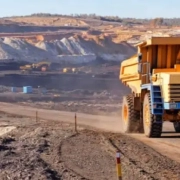The transition to renewable energy is transforming global energy landscapes, bringing forth significant environmental, economic, and social changes. One crucial aspect of this transformation that often goes unnoticed is its impact on mineral rights. This article delves into how renewable energy trends are reshaping the mineral rights landscape, examining various dimensions such as economic implications, environmental concerns, technological advancements, and regulatory challenges.
Understanding Renewable Energy Impacts on Trends
Renewable energy sources, including solar, wind, hydro, geothermal, and biomass, are gaining traction due to their potential to reduce greenhouse gas emissions and reliance on fossil fuels. As nations strive to meet their climate goals, investments in renewable energy infrastructure are accelerating. This surge in renewable energy adoption is accompanied by a rising demand for minerals essential for the production and maintenance of renewable energy technologies.
Essential Minerals for Renewable Energy
The shift towards renewable energy hinges on a variety of minerals. Critical minerals such as lithium, cobalt, nickel, rare earth elements, and copper play a pivotal role in manufacturing batteries, wind turbines, solar panels, and electric vehicles. The demand for these minerals is set to escalate, driven by the global push for greener energy solutions.
Economic Implications for Mineral Rights Holders
The burgeoning renewable energy sector presents both opportunities and challenges for holders of mineral rights. On one hand, the increasing demand for critical minerals can enhance the value of mineral rights, providing significant financial returns. On the other hand, this surge in demand may lead to heightened competition and potentially contentious negotiations over mineral extraction rights.
Increased Value and Investment Opportunities
As renewable energy projects expand, mineral rights holders may witness an appreciation in the value of their assets. Companies involved in renewable energy technology are likely to invest heavily in securing access to essential minerals, thereby driving up market prices and generating lucrative opportunities for mineral rights owners. This scenario can lead to increased revenues from royalties and lease agreements.
Competitive Landscape and Negotiation Dynamics
The competition for critical minerals is intensifying as countries and corporations vie for a secure supply chain. This heightened competition can create a complex landscape for mineral rights holders, necessitating robust negotiation strategies. Ensuring fair compensation and sustainable extraction practices becomes paramount, requiring a delicate balance between maximizing economic gains and preserving environmental integrity.
Environmental Considerations and Sustainability
The environmental footprint of mineral extraction for renewable energy technologies is a significant concern. While renewable energy itself is aimed at reducing carbon emissions, the extraction and processing of critical minerals can pose environmental challenges. Addressing these concerns is essential to ensure the long-term sustainability of both the renewable energy sector and mineral rights management.
Mitigating Environmental Impact
Efforts to mitigate the environmental impact of mineral extraction are crucial. This includes adopting sustainable mining practices, minimizing habitat disruption, and implementing effective waste management strategies. Companies involved in renewable energy projects must prioritize environmental stewardship to align with the overarching goals of sustainability and climate mitigation.
Regulatory Frameworks and Compliance
Regulatory frameworks play a pivotal role in governing mineral extraction activities. Stricter regulations are being implemented to ensure that mining operations adhere to environmental standards and social responsibility. Mineral rights holders must navigate these regulatory landscapes, ensuring compliance while advocating for fair and transparent practices in the extraction process.
Technological Advancements in Mineral Extraction
Advancements in technology are revolutionizing the way minerals are extracted and processed. Innovations such as automation, artificial intelligence, and advanced material science are enhancing the efficiency and sustainability of mining operations. These technological developments have profound implications for mineral rights holders, influencing extraction methods, cost structures, and overall profitability.
Automation and Efficiency
The integration of automation technologies in mining operations is streamlining processes, reducing labor costs, and improving safety standards. Automated machinery can perform tasks with precision and consistency, enhancing overall productivity. For mineral rights holders, this translates to more efficient extraction and potentially higher returns on investment.
Artificial Intelligence and Data Analytics
Artificial intelligence (AI) and data analytics are transforming the mining sector by enabling predictive maintenance, optimizing resource allocation, and enhancing decision-making processes. AI-driven models can analyze vast datasets to identify optimal extraction sites, forecast mineral yield, and monitor environmental impact. This data-driven approach empowers mineral rights holders with valuable insights for strategic planning and resource management.
Advanced Material Science
Advancements in material science are contributing to the development of more efficient and durable renewable energy technologies. Innovations in battery technology, for instance, are extending the lifespan and performance of energy storage systems. These advancements have direct implications for the demand and utilization of critical minerals, influencing market dynamics and shaping the future of mineral rights.
Social and Community Impacts
The extraction of minerals for renewable energy projects has significant social and community implications. Ensuring that mining activities benefit local communities while minimizing adverse effects is a crucial consideration. This involves addressing issues such as land rights, displacement, and equitable distribution of economic benefits.
Community Engagement and Stakeholder Collaboration
Engaging with local communities and stakeholders is essential to foster trust and collaboration. Transparent communication, inclusive decision-making processes, and fair compensation practices are vital to ensure that mineral extraction projects gain social license to operate. Mineral rights holders and companies must work together to address community concerns and contribute to local development.
Ethical Sourcing and Human Rights
Ethical sourcing practices are gaining prominence in the context of mineral extraction for renewable energy. Ensuring that minerals are sourced responsibly, without contributing to human rights abuses or environmental degradation, is a key priority. Companies and mineral rights holders are increasingly adopting due diligence frameworks to trace the supply chain and verify the ethical integrity of their operations.
Regulatory Challenges and Policy Considerations
The evolving landscape of renewable energy and mineral rights is subject to a complex web of regulatory challenges and policy considerations. Governments are enacting laws and regulations to balance economic development with environmental protection and social responsibility. Navigating these regulatory frameworks requires a nuanced understanding of legal, economic, and environmental factors.
Evolving Legal Frameworks
The legal frameworks governing mineral rights and renewable energy are continuously evolving. Governments are revising policies to address emerging challenges and opportunities in the sector. Mineral rights holders must stay abreast of these changes, ensuring compliance and proactively engaging in policy discussions to advocate for favorable regulations.
Balancing Interests and Ensuring Fair Practices
Balancing the interests of various stakeholders, including mineral rights holders, renewable energy companies, local communities, and environmental groups, is a complex task. Ensuring fair practices and equitable distribution of benefits requires collaborative efforts and transparent governance. Policymakers must strive to create a conducive environment that fosters sustainable development and responsible resource management.
Future Prospects and Strategic Considerations With Renewable Energy Impacts
The future of mineral rights in the context of renewable energy trends is marked by both opportunities and uncertainties. As the global energy transition accelerates, strategic considerations for mineral rights holders become increasingly important. Adapting to changing market dynamics, embracing technological innovations, and prioritizing sustainability will be crucial for long-term success.
Embracing Innovation and Adaptability
The rapid pace of technological advancements necessitates a proactive approach to innovation and adaptability. Mineral rights holders should explore opportunities to invest in research and development, collaborate with technology providers, and adopt cutting-edge solutions to enhance extraction efficiency and sustainability.
Long-Term Planning and Resilience
Long-term planning and resilience are essential to navigate the evolving landscape of renewable energy and mineral rights. Developing comprehensive strategies that account for market trends, regulatory changes, and environmental considerations will enable mineral rights holders to thrive in a dynamic environment. Building resilience to potential disruptions and uncertainties is crucial for sustained success.
The impacts of renewable energy trends on mineral rights are multifaceted and far-reaching. There are economic implications and environmental concerns to technological advancements and regulatory challenges. The transition to renewable energy is reshaping the mineral rights landscape. By understanding these dynamics and adopting strategic approaches, mineral rights holders can harness the opportunities presented by the renewable energy revolution while contributing to a sustainable and equitable future.
Do you you have any questions or thoughts about the topic related to renewable Energy Impacts? Feel free to contact us here or leave a comment below.










